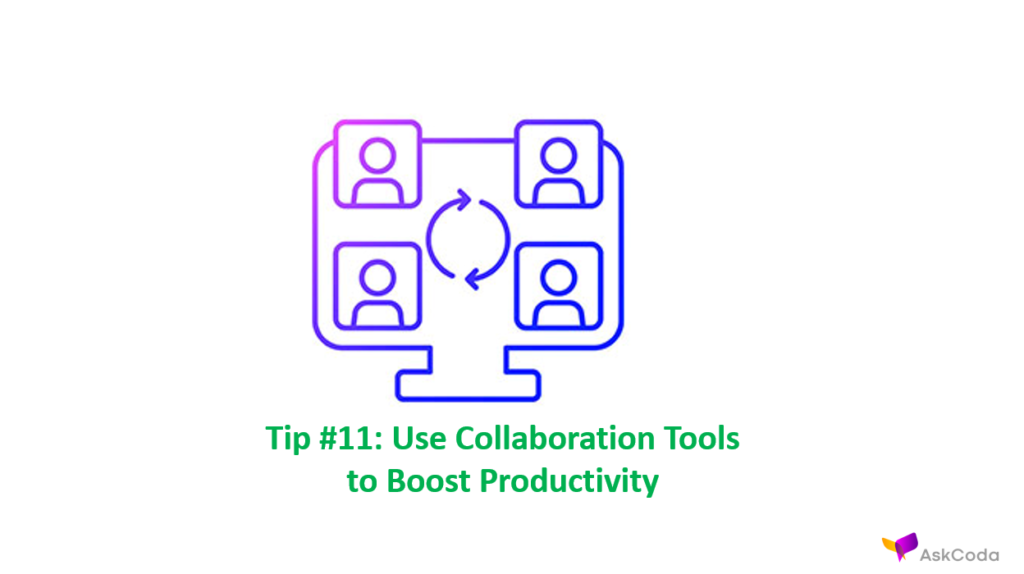Use a Collaboration Tool to Better Manage Your Team and Boost Productivity

In a peer coaching session that I was facilitating for ten entrepreneurs, Esri, the owner of a small management consulting firm that works with power utilities, expressed a sentiment shared by everyone there. “I have so much work to do and so little time to do it! I constantly feel like my hair is on fire.” At the time, Esri had nine employees and several contractors. She felt overwhelmed by all she needed to do to manage her workers, clients, and everything else required to run and grow her business. As I listened to Esri and asked a few strategic questions, a very important theme stood out: Esri was operating her business in reactive mode.
Like many business owners, Esri spent most of her time reacting to the things that were in front of her, demanding attention. She was responding to what was coming at her rather than executing her work in a strategic manner. She was responding to emails, returning phone calls, talking to employees who popped into her office, dealing with client issues, and using lists to remember what she needed to do. Esri wasn’t visualizing her work and planning what to work on based on what she was trying to accomplish. She also wasn’t delegating effectively and often forgot what she’d delegated to others until just before she needed it, which resulted in work being delivered that didn’t meet her expectations or needs—if it was delivered at all.
Trying to run a business when you spend most of your time reacting to what’s coming at you is exhausting. It’s also inefficient and very growth-limiting. Remember the 80/20 rule? Twenty percent of your efforts will drive 80% of your results. Given that, you really need to know what that 20% is that you should be focusing on. One way to figure this out is by organizing yourself and your team using a collaboration tool that can help you visualize your work.
A collaboration tool is a platform that helps you and every member of your team centralize task management and communication in a way that enables transparency that can help you better see what everyone is working on, which efforts are driving results, and which aren’t. There are lots of web-based collaboration platforms on the market today, including Basecamp, Trello, Monday.com, Notion, and Asana. Over the past ten years, I’ve used several of these platforms, sometimes more than one at a time, for different things. Each has its strengths and weaknesses. My personal favorite, and one that has been a game-changer for my work is Monday.com.
How can a collaboration tool be a game-changer? There are several ways in which leveraging a collaboration tool helped me. Here a just a few:
- It freed up space in my brain. The most important way using a collaboration tool changed my life is that it freed up space in my brain, which created room for creativity, innovation, and insights. It also lowered my anxiety level. I’m balancing three businesses right now. One is mature, one is in growth mode, and the other is a start-up. I’ve got lots of spinning plates, so to speak. Knowing which ones needed attention, how much, and when to keep them rotating was a constant worry. Now that I can see all of my projects, to-do’s, resources, timelines, and everything else in one place, I know what I need to focus on. Also, by utilizing the fantastic automations in my collaboration tool, I can set up all kinds of guardrails that will alert me to the things I need to know to keep things on track. Not having to keep track of all of this in my head has given me back the space to strategize and think clearly.
- I can see what everyone is doing or not doing. All of my employees and the freelancers I work with use the collaboration tool. This gives me and them visibility into what everyone is doing. This helps me delegate better and enables me to gauge how everyone is performing. This transparency has increased productivity. Everyone knows that everyone else can see what’s on their plate. No one can hide, and no one wants to be seen as a slacker.
- It streamlines communication. Communication about tasks and projects in the tool happens in the tool. This has made it so much easier to find relevant information and to see what discussions are happening to track progress better,
- The tool makes it a lot easier to tie efforts to outcomes. When I do my quarterly reviews, I can look at what an individual or a team worked on, what their efforts were, and what they achieved. This helps me to make better decisions about how to invest resources. Being able to see this has also given me ideas about metrics to track, which in turn has led to my businesses being more data-driven.
I firmly believe in the value that collaboration tools can help small businesses unlock. There are lots of good collaboration tools available, and finding the right one for your needs will take a bit of effort. Learning how to use it properly will also take some effort. And yes, getting your team to use it will take some effort too. But it’s well worth it. Once you get over the initial adoption hurdle, you’ll unleash a new level of productivity in your business, which can help propel you toward your growth goals.
